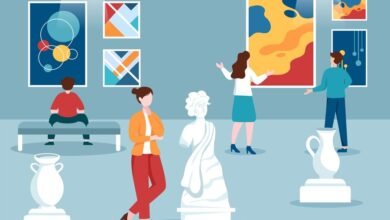How to Incorporate Goya Paintings into Your Artwork

Francisco Goya is a name that reverberates through the history of art, celebrated for his daring approach and innovative techniques that transcended the conventions of his time. Known as “the father of modern art,” Goya’s legacy continues to inspire generations of artists with his evocative storytelling, mastery of contrasts, and emotional depth. But how can today’s artists draw from Goya’s masterpieces to enhance their own work?
This blog will explore Goya’s pivotal role in art history, uncover the nuances of his techniques and themes, and share practical tips on how you can channel his influence into your creations. We’ll also discuss what contemporary artists can learn from studying his work and why a solid understanding of art history is vital for meaningful modern pieces.
Who Was Francisco Goya?
Francisco Goya (1746–1828) was a Spanish painter whose works bridged tradition and innovation. Often labeled as the last of the Old Masters and the first of the moderns, Goya’s career spanned intense societal changes, from the Enlightenment to the turbulence of the Napoleonic Wars.
His range of subject matter was vast. On one hand, he painted luminous portraits of Spanish royalty as a court painter. On the other, his later works—filled with haunting imagery and stark social critique—reflect his disillusionment with humanity. His famed works like Saturn Devouring His Son and The Third of May 1808 display his ability to convey visceral emotion, darkness, and the fragility of life.
Above all, Goya’s art is a study in contrasts—light and dark, beauty and horror, power and vulnerability—all depicted through sharp observation and unparalleled skill.
Goya’s Techniques and Themes
Understanding Goya’s techniques and themes is key to incorporating his influence into your own artistic expression. Here are some of the defining characteristics of Goya paintings and their relevance today:
Use of Chiaroscuro
Goya was a master of contrast, often incorporating chiaroscuro to heighten drama in his works. By using strong shadows against illuminated areas, he created depth and emotional intensity. This technique is visible in The Third of May 1808, where light focuses on the victims of execution, evoking empathy and tragedy.
Modern Relevance: Chiaroscuro can still be used to add dramatic tension and mood, whether in traditional oil painting or digital illustrations.
Emotional Storytelling
Goya’s work is rarely decorative—it carries a narrative. His paintings included social commentary, personal emotions, and subtle allegories. You’ll find this in his Black Paintings, where each composition carries layers of existential dread and reflection on the human condition.
Modern Relevance: By embedding a powerful narrative into your art, you can create works that not only attract viewers but deeply resonate with them.
Focus on Texture
Goya achieved texture and realistic imagery through his brush techniques. His dynamic strokes gave movement to clothing, lightness to hair, and roughness to bark or skin. His ability to create tactile sensations added another sensory layer to his pieces.
Modern Relevance: Experiment with texture techniques that allow viewers to “feel” your work—a crucial aspect, particularly in tactile art forms or highly immersive digital art.
Themes of Power and Fragility
Goya was known for exploring dualities. His portraits depicted powerful figures in vulnerable moments. Similarly, his darker works showcased societal collapse and personal anguish.
Modern Relevance: Today, duality can engage viewers in profound ways, making them pause to question the complexities of life, identity, or politics.
How to Incorporate Goya’s Style Into Your Artwork
Looking to capture Goya’s essence in your own work? Here are practical ways to bring his principles into modern art practices.
1. Experiment with Light and Shadow
Use lighting to add focus and depth to your pieces. Position bright, central light sources to highlight key elements while letting the edges fade into shadows. Digital artists can achieve this using lighting layers and textured brushes, while traditional painters can experiment with layering translucent paints for a glowing effect.
2. Infuse Art with Storytelling
Think beyond aesthetics. What story are you trying to tell? Add symbolic elements or subtle foreshadowing to keep viewers engaged. For example, include objects, colors, or expressions that hint at a deeper meaning.
3. Explore Darker Themes
While Goya didn’t shy away from raw emotion, his approach was never gratuitous—his darker works are thoughtful reflections, not sensationalist. Bring a similar intentionality to your exploration of themes like fear, loss, or anxiety.
4. Play With Texture
If you work digitally, use custom brushes that mimic the textures of traditional painting mediums like oil or gouache. Traditional artists can use tools such as palette knives or even unconventional items like sponges or cotton to build layers of texture.
5. Merge Realism With Imagination
Goya blended realism with fantastical, unsettling imagery, particularly in The Sleep of Reason Produces Monsters. Build this into your work by starting with something familiar and slowly introducing surreal or unexpected elements.
6. Allow for Emotion-Driven Creativity
Goya’s creations often reflected his personal struggles and observations of the world. Don’t be afraid to draw from your own experiences. Art that is fueled by honesty, joy, or even discomfort tends to resonate deeply with audiences.
Goya’s Influence on Modern Artists
Goya’s experimentation and willingness to confront moral and societal issues paved the way for countless contemporary artists. Modern painters like Anselm Kiefer and Francis Bacon have acknowledged his influence in tackling heavy themes and complex emotions.
Digital art and animation have also benefited from Goya-esque approaches. Think darkly atmospheric scenes in video games or fantastical yet grotesque imagery in animated films—Goya’s DNA is everywhere.
Why Art History is Key to Your Artistic Growth
Understanding art history doesn’t constrain a creator; it liberates them. By studying geniuses like Francisco Goya, you deepen your visual vocabulary, connect with centuries-old conversations, and learn how to innovate without disconnecting from the past.
Integrating Goya painting techniques into your style isn’t just a tribute; it’s a rich source of knowledge that can push your work to unparalleled levels of sophistication.
Find Joy in the Past to Inspire the Future
Francisco Goya’s legacy is a testament to the timelessness of art rooted in narrative, emotion, and bold experimentation. By studying his works and principles, creatives today can uncover new ideas for lighting, texture, and storytelling. Whether you’re a painter, illustrator, or digital designer, incorporating the essence of Goya enriches your storytelling and connects you to the enduring human experience.
Take the next step in your artistic evolution. Explore Goya paintings online, visit a museum, and perhaps reimagine your next masterpiece with a touch of Goya-inspired brilliance.



